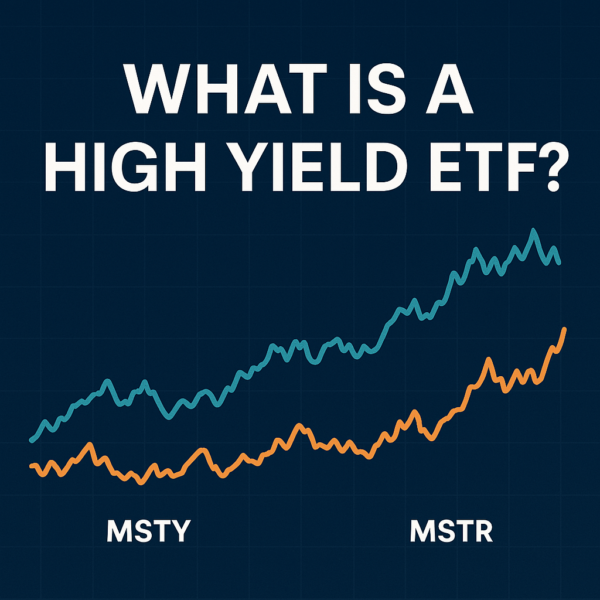What Are the Best Clean Energy ETFs to Buy?
Many investors consider clean energy ETFs to be a win-win investment. First, you’re investing your money into something that will help the world as a whole (clean energy alternatives). Second, the clean energy space actually has a tremendous opportunity to grow over the coming decade. This could lead to impressive gains for the companies that dominate the industry. For my thesis on the future of clean energy and a reminder on what ETFs are, skip to the last section. If you only care about the ETFs, read on!

5 Clean Energy ETFs To Buy
Simply put, clean energy ETFs track stocks that operate in the renewable energy space. For instance, examples of renewable energy are solar, wind, hydroelectric or geothermal energy. In addition, most of these ETFs track the movements of 100 different stocks.
No. 5 SPDR S&P Kensho Clean Power ETF (NYSE: CNRG)
The SPDR S&P Kensho Clean Power ETF invests in U.S.-listed equities that are included in the clean power sector. This clean energy ETF’s five largest holdings are:
- Consolidated Edison Inc
- Enbridge Inc
- JinkoSolar Holding Co
- Centrais Eletricas Brasileiras SA
- New Jersey Resources Corporation
This fund is up 172% over the past five years but was down 33% in 2021.
No. 4 Global X Solar ETF (Nasdaq: RAYS)
The Global X Solar ETF invests in companies that should benefit from the advancement of the global solar technology industry. Its five biggest holdings are:
- Enphase Energy Inc
- SolarEdge Technologies Inc
- Tianjin Zhong-A
- Longi Green EN-A
- Xinyi Solar Holdings
This fund was started in late 2021 and is down nearly 30% since its launch.
No. 3 Invesco Solar ETF (NYSE: TAN)
The Invesco Solar ETF invests in companies that operate in the solar energy sector. Its five biggest holdings are:
- Enphase Energy Inc
- SolarEdge Technologies Inc
- First Solar Inc
- GCL Technologies Holdings
- Xinyi Solar Holdings
This fund is up 268% over the past five years but was down 48% in 2021. Keep reading for more on the top clean energy ETFs.
No. 2 Invesco Global Clean Energy ETF (NYSE: PBD)
The Invesco Global Clean Energy ETF invests in companies that help the advancement of cleaner energy and conservation. Its five biggest holdings are:
- Tritium DCFC
- Ecopro BM
- LG Energy Solution
- Eolus Vind AB
- Energiekontor AG
This fund is up 90% over the past five years but was down 40% in 2021.
No. 1 iShares Global Clean Energy ETF (Nasdaq: ICLN)
The iShares Global Clean Energy ETF tracks the results of equities in the clean energy sector. In total, this clean energy ETF has 103 different holdings and its top five biggest holdings are:
- Enphase Energy Inc
- Solaredge Technologies Inc
- Consolidated Edison Inc
- Vestas Wind Systems
- Plug Power Inc
This fund is up 124% over the past five years but lost 40% in 2021.
Why Clean Energy ETFs?
“Clean energy” is not a new concept. Society has recognized the need for alternative energy sources for decades. However, there has never been a major catalyst that actually forces the world to make the switch. But, in the past few years, there have been three…
- COVID-19: This pandemic damaged the global supply chain which made it difficult for companies to get products on shelves. Things got so bad that the CEO of Blackrock stated that “globalization is gone for good.” This mentality impacts all U.S. companies, including ones that operate in the clean energy space. This will be good for U.S.-based clean energy and EV companies.
- The Russia/Ukraine conflict: This conflict has cut off the flow of certain raw materials to the rest of the world, which has had many major side effects. Most importantly, it caused gas prices to skyrocket in the U.S. to over $4 per gallon.
- Improved technology: The technology for clean energy sources is finally reaching a point where it makes financial sense to switch over. This is particularly true with electric vehicles. Tesla delivered just under 1 million EVs in 2021 and is known for producing an exceptional vehicle.
Clean energy is in a position similar to remote work. For years, society recognized that working remotely was feasible. Employees complained that there was no reason to come into the office for eight hours a day, five days a week. However, there was never a major catalyst to shift the status quo. That is, until COVID-19.
With clean energy, the world recognized the need for it but lacked a major catalyst to enforce real change. Now, in the wake of COVID-19, deglobalization, and the war in Ukraine, that might finally be starting to change.
What’s an ETF? Conclusions on Clean Energy ETFs
An exchange-traded fund (ETF) is a fund that owns a large portfolio of securities. The securities that the fund owns are usually in line with the fund’s strategy. There are ETFs that track just about everything. For example, there are ETFs that track the S&P 500, real estate, growth stocks, dividend stocks, clean energy stocks and much more.
Inventors prefer ETF investing because it gives you instant diversification. It also eliminates the need to pick stocks, which can be time-consuming and risky if you pick the wrong ones.
You can imagine an ETF like a fruit platter. Instead of picking one specific fruit to eat, you can order the fruit platter and get a small slice of every single fruit. Instead of picking one specific stock to buy, you can buy shares in an ETF and get exposure to tons of different stocks.
I hope that you’ve found this article on clean energy ETFs to be valuable! Please remember that I’m not a financial advisor and am just offering my own research and commentary. As usual, please base all investment decisions on your own due diligence.





